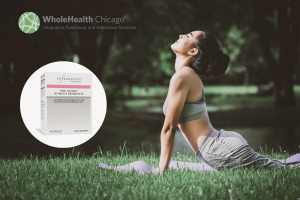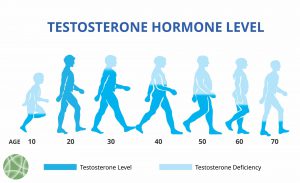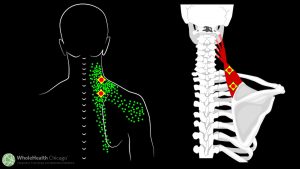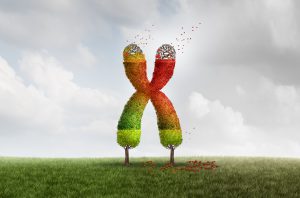In our quest for well-being, we often overlook an unsung hero within us—the vaginal microbiome. While we commonly associate the term “microbiome” with our gut, it extends its influence to various corners of our body, including our skin and, yes, our vagina. This remarkable microbial community, consisting of bacteria, fungi, viruses, and even parasites, plays a pivotal role in maintaining our health. A balanced vaginal microbiome contributes to seamless digestion, a robust immune system, neurotransmitter production, and even longevity. Yet, in our well-intentioned efforts to care for our bodies, we may inadvertently disrupt this delicate ecosystem. From douching and smoking to antibiotics and unwashed sex toys, several factors can upset the harmonious balance of the vaginal microbiome. In the pages ahead, we will explore the intricacies of this often-overlooked aspect of women’s health, shedding light on the care and feeding of your vaginal microbiome, and offering insights into maintaining its delicate equilibrium.
Category: Athletic Performance
Hydration and Longevity
Sometime in her eighties, my Aunt Hildy, who passed on at 94 or so, handed me a book, “Your Body’s Many Cries for Water”, by an Iranian physician with a totally unpronounceable name, Fereydoon Batmanghelidj, M.D. She told me it had changed her life. Dr. B. attributed virtually all chronic illnesses, premature death, and susceptibility to infections to the state of chronic dehydration we had allowed ourselves to endure by our insufficient intake of water.
Because Dr. B. also felt that water had curative properties, his work was literally shredded by conventional physicians here in the U.S., where he was regarded as a “crank” and a “quack”. The Wikipedia entry is especially brutal since it’s written by Stephen Barrett of Quackwatch, which (if you bother to read it) seems to have a special loathing for Dr. B. because of his claims that good hydration promotes longevity.
And so the years pass. Dr. B. dies at 74, although his books (he wrote seven more) all remain in print, apparently being read by the well-hydrated, healthy, and generally ignored by the desiccated conventional physicians.
Water and Your Longevity
You’ll like this story. Sometime in her eighties, my Aunt Hildy, who passed on at 94 or so, handed me a book, “Your Body’s Many Cries for Water”, by an Iranian physician with a totally unpronounceable name, Fereydoon Batmanghelidj, M.D. She told me it had changed her life. Dr. B. attributed virtually all chronic illnesses, […]
Anti-Aging Medicine: Testosterone For Men, And Yes, It Really Works
In middle age, you, as a man, or your sexual partner (keeping this observation to her/himself), will likely start to notice a group of symptoms due to a slow but inevitable decline of your male hormone testosterone. As the movie director Martin Scorsese put it well, “Sex becomes memory.” Not necessarily. Not by a long […]
Wholehealth Chicago Partners With Chicago’s Finest Trigger Point Therapy Team
Let me tell you about Mary Biancalana and the value of myofascial trigger point therapy. A lifelong fitness expert and personal trainer, in her early thirties Mary found herself with chronic headaches. First, she was told they were ‘psychological,’ then a manifestation of a little understood term called “trigger points” and another condition she’d never […]
Longevity Medicine: How Much Exercise Really Makes A Difference?
People being people, they are always on the lookout for the easiest route to anything fun and worthwhile and most would rather add years to their lives by doing something simple, like taking nutritional supplements. Add healthful eating, reducing alcohol, stopping tobacco altogether, and the road to longevity gets more challenging. Start recommending regular exercise […]
Longevity Medicine: First, Know Your Telomeres!
Most people figure they must be getting older based on how they feel and look. We wince at our first grey hair, deepening wrinkles, and shifting body fat. We huff and puff climbing the stairs, forget names, and occasionally leak fluids. We relate to the line from a Leonard Cohen song, “I ache in the […]
Director of IV Therapies Katie McManigal, BSN, ANP
Most people at some point in their lives have had an intravenous (IV) line. An adept nurse warned you about the tiny pinch of the needle as it was smoothly inserted and taped in place. Then the fluid dangling above your head slowly started making its way through a tube and into your body. IVs […]
Riboflavin (vitamin B2)
Riboflavin is a water-soluble vitamin which is also known as vitamin B-2 or vitamin G. Riboflavin plays a key role in the metabolism of carbohydrates, fats, and proteins in the body. In the body, riboflavin is converted into flavin mononucleotide (FMN), which is then converted to the coenzyme, flavin adenine dinucleotide (FAD). As part of the electron transport chain in the mitochondria, FAD is central to each cell’s energy production. These two flavoproteins and other enzymes that rely on them are also involved in the metabolism of several other vitamins.
Ephedra (Ma huang)
The Herb ephedra, also known by its Chinese name Ma huang, has been used in Traditional Chinese Medicine since 3000 B.C. to treat colds, asthma, and other upper-respiratory disorders. An evergreen shrub, ephedra (usually Ephedra sinica) over the centuries has traditionally been dried as a whole herb and then added in very small amounts to a tea, along with other herbs, to help ease congestion. Preparations made from two other species, E. intermedia and E. equisetina, have also been used in Traditional medicine, but generally have a less potent therapeutic effect. Traditional East Asian herbal medicines containing ephedra were generally herbal combination formulas designed for specific short-term usage. These would be used in illness conditions where the action of ephedra would counteract certain types of unhealthy symptoms.
DMAE (Dimethylaminoethanol)
DMAE, or dimethylaminoethanol, is a compound found in high levels in anchovies and sardines. Small amounts of DMAE are also naturally produced in the human brain. Health-food outlets sell it in capsule form to “boost brain power.” While it probably won’t make you smarter, DMAE may play a role in treating memory lapses and symptoms of Alzheimer’s disease. Some evidence suggests it may also play a beneficial role against the impulsive and disruptive behaviors caused by attention deficit hyperactivity disorder (ADHD).
Lysine
Lysine is one of numerous amino acids that the body needs for growth and tissue repair. It is classified as one of the nine “essential” amino acids because you need to get it from outside sources such as foods or supplements–in other words the body can’t make it on its own.
Coenzyme Q10 (CoQ10)
One of the world’s most popular supplements, the chemical coenzyme Q10 has generated great excitement as a heart disease remedy and a cure for countless other conditions. The body naturally produces this compound, which has been dubbed “vitamin Q” because of its essential role in keeping all systems running smoothly. In fact, the scientists who identified coenzyme Q10 in 1957 initially honored its ubiquitous presence–it’s found in every human cell and in all living organisms–by naming it “ubiquinone.” Small amounts are also present in most foods.
Carnitine
Carnitine is an amino acid-like compound that helps the body produce energy. While readily abundant in meats and dairy foods, some people take carnitine in supplement form to increase vitality. Carnitine transports fatty acids to the “factory” portion of cells, which then convert the fat into energy that the heart, muscles, and other body tissues can use.
Bee Products
As worker bees conduct their daily business–maintaining their hive, providing for the queen bee, collecting pollen–they unwittingly produce substances that some enthusiasts consider valuable in healing. Health-food stores and nutrition shops often carry three of these products: propolis, royal jelly, and bee pollen.
Massage Therapy
Massage is the manipulation of the soft-tissues of the body. It helps to ease stress and muscular tension, relieve pain from injuries, and speed healing from certain acute and chronic conditions. Today millions of people worldwide visit massage therapists as a form of regular health-care maintenance.






